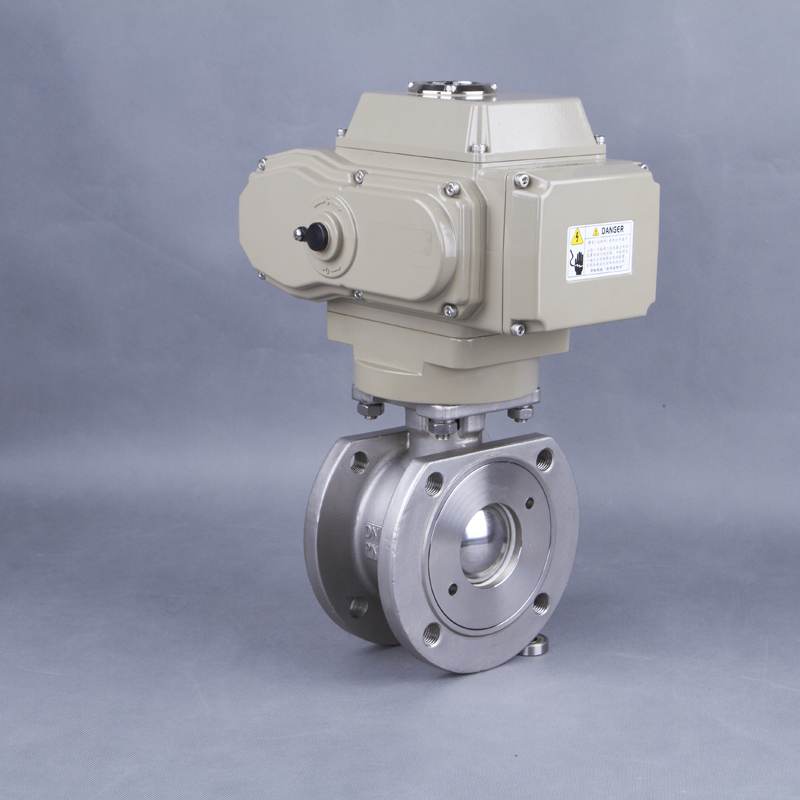Ball valve leaks stem from issues like wear, corrosion, and improper installation. Advanced solutions, such as electric ball valves and electric actuated ball valves, minimize leakage risk with precision control and automation. Smart systems, like the ball valve electric actuator and electric ball valve actuator, enhance monitoring and reduce downtime. Proper maintenance and material selection are crucial for long-lasting, leak-free performance.
1. Introduction
Ball valves are essential for precise flow control, but leaks can disrupt performance and increase costs. Issues like wear and improper installation often contribute to leakage. Advanced solutions, including the electric ball valve and electric actuated ball valve, paired with tools like the ball valve electric actuator and electric ball valve actuator, provide enhanced precision and reliability to prevent leaks and maintain efficiency.
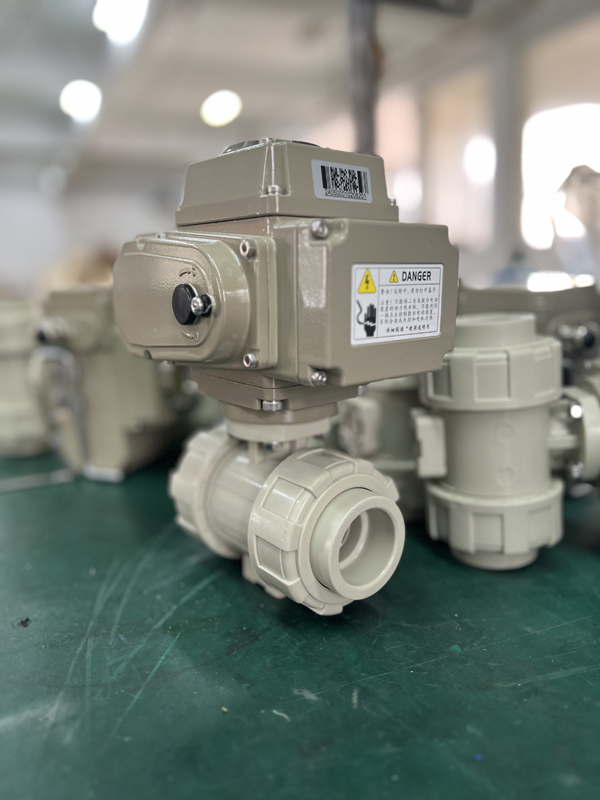
2. Understanding the Causes of Ball Valve Leaks
2.1 Wear and Tear on Internal Components
Over time, the seals, seats, and the ball in a ball valve can degrade due to wear, corrosion, and material fatigue. Constant exposure to harsh operating conditions, such as high pressures, extreme temperatures, or abrasive media, accelerates this deterioration. Damage to these components compromises the valve’s ability to provide a reliable seal, increasing the risk of leaks and inefficiencies. Advanced options like an electric ball valve or electric actuated ball valve offer enhanced materials and design features to combat these challenges, ensuring longer service life and improved system performance.
2.2 Improper Installation or Alignment
Improper setup of a ball valve can cause misalignment between the ball and the seats, compromising the valve’s ability to create a tight seal. This misalignment often leads to leaks, reduced efficiency, and potential system downtime. Ensuring proper installation and precise alignment is critical, especially for advanced systems like the electric ball valve or electric actuated ball valve, where accurate positioning enhances performance and minimizes operational risks.
2.3 Corrosion and Material Degradation
Exposure to corrosive fluids or gases can significantly weaken the materials of a ball valve over time. Corrosion attacks critical components such as the ball, seals, and seats, resulting in surface degradation, pitting, or complete material breakdown. This damage compromises the valve’s sealing capability, leading to leaks, reduced performance, and potential system failures. Advanced options like the electric ball valve or electric actuated ball valve are often designed with corrosion-resistant materials to withstand aggressive environments, ensuring durability and consistent operation.
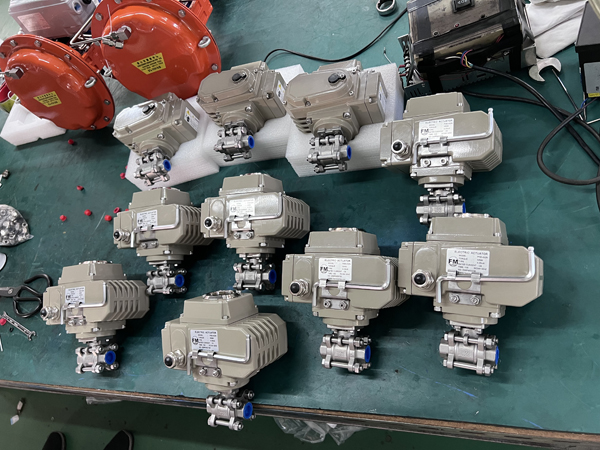
3. Diagnosing a Ball Valve Leak
How to identify signs of leakage early (visual inspections, pressure tests).
Early detection of leakage in a ball valve is crucial to maintaining system efficiency and preventing costly damage. Regular visual inspections can reveal signs such as fluid seepage, discoloration, or corrosion around the valve. Pressure tests are equally important, as they measure drops in pressure that may indicate leakage, even when visible signs are absent. For advanced systems like an electric ball valve or electric actuated ball valve, monitoring these indicators ensures optimal performance and minimizes the risk of unplanned downtime.
Tools and techniques, including the role of smart systems in modern valves like the electric ball valve actuator.
Modern tools and techniques for maintaining ball valves have evolved significantly, with smart systems playing a pivotal role. Advanced technologies integrated into devices like the electric ball valve actuator enable real-time monitoring, precise diagnostics, and performance optimization. These systems detect anomalies, track wear patterns, and provide actionable insights to prevent failures, ensuring the reliability and efficiency of components such as the electric ball valve. This proactive approach not only streamlines maintenance but also minimizes downtime and extends service life in demanding operations.
4. Preventing Leaks in Electric and Manual Ball Valves
4.1 Importance of Regular Maintenance
Proper maintenance of a ball valve system involves several critical steps to ensure longevity and optimal performance. Regular cleaning of the ball and internal surfaces prevents debris buildup, while lubrication reduces friction and wear on moving parts. Inspecting key components like seals, seats, and the electric actuator for signs of damage or fatigue allows for early detection of issues. Timely replacement of worn parts minimizes the risk of system failures and ensures a reliable seal, particularly in advanced configurations like the electric ball valve. Routine care extends the service life and efficiency of these precision-engineered systems.
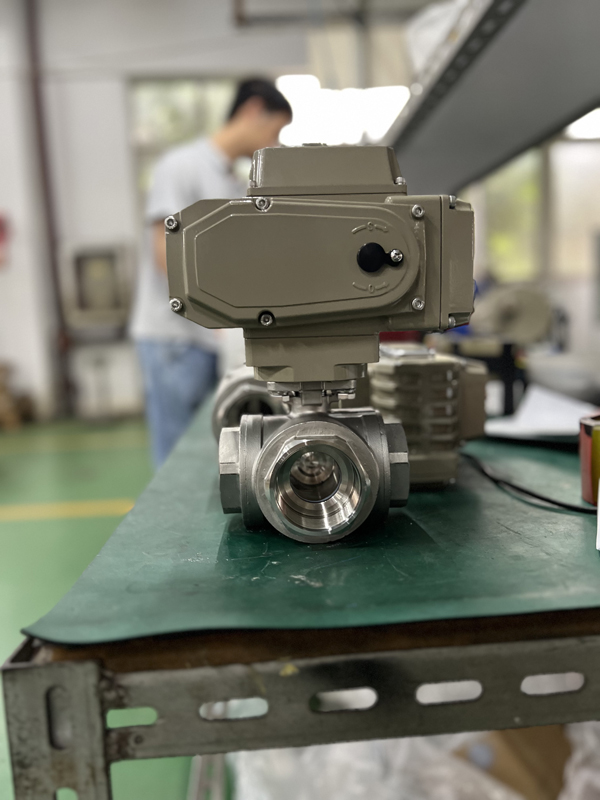
4.2 Material Selection for Durability
The lifespan of a ball valve is heavily influenced by the materials used in its construction, especially in corrosive environments. Components like the ball, seals, and electric actuator must be made from corrosion-resistant materials such as stainless steel or specialized alloys to withstand chemical attacks and prevent degradation. Poor material selection can lead to premature wear, leaks, and failures, particularly in advanced systems like the electric ball valve or electric actuated ball valve. Choosing high-quality, resistant materials ensures durability, reliability, and optimal performance even in the most demanding conditions.
4.3 Proper Installation of Electric Actuators
Proper installation and configuration of a ball valve electric actuator are crucial to minimizing leak risks and ensuring reliable operation. Begin by aligning the actuator precisely with the valve stem to prevent stress on components. Secure all connections firmly to eliminate potential points of fluid escape. Once installed, perform thorough calibration to verify that the actuator achieves full open and close positions without misalignment. For advanced systems like the electric ball valve, following these best practices ensures a tight seal, optimal performance, and prolonged service life in critical applications.
5. Why Leaks are Less Probable in Electric Actuated Ball Valves
5.1 Precision and Automation
Electric actuated ball valves significantly reduce operator error by leveraging automation, precision control, and real-time feedback. These advanced systems eliminate the variability inherent in manual operation, providing exact positioning and consistent performance. With features like automated open and close functions, the electric actuated ball valve ensures accurate operation even in complex or high-pressure applications. Real-time monitoring through the electric actuator allows for immediate adjustments, enhancing reliability and efficiency while minimizing the risk of human errors in critical processes.
5.2 Remote Monitoring and Control
IoT-enabled electric ball valve actuators revolutionize real-time leak detection by combining advanced sensors, data connectivity, and automated responses. These systems continuously monitor pressure, flow, and other key parameters, instantly identifying anomalies that indicate potential leaks. Once detected, the actuator can autonomously adjust or shut the valve to prevent further damage. This intelligent functionality not only enhances safety and efficiency but also reduces downtime in critical operations, making the IoT-enabled electric ball valve actuator an indispensable solution for modern process control systems.
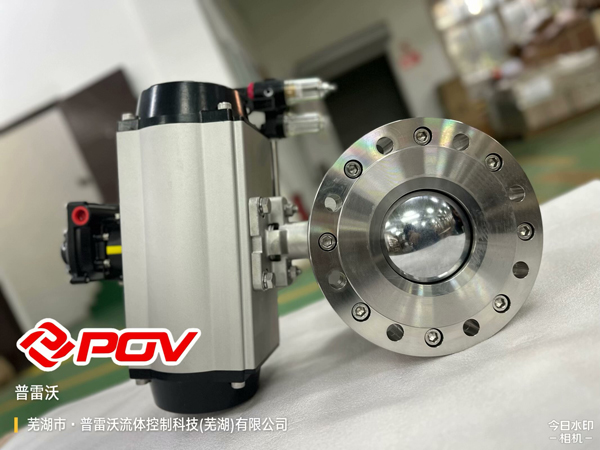
6. Repairing a Leaking Ball Valve
Step-by-step guide to repairing common issues, including replacing seals.
Repairing a ball valve, including seal replacement, requires careful execution to restore optimal functionality. Begin by isolating the valve from the system and relieving any pressure. Disassemble the valve by removing the housing to access internal components. Inspect the ball, seals, and connectors for wear or damage, replacing any faulty seals with high-quality, compatible replacements. Ensure all components are clean and free of debris before reassembly. During reassembly, align the ball and seals properly to maintain a tight, leak-free fit. For systems like an electric ball valve, check the actuator’s alignment and calibration after reattachment to verify smooth operation and reliable performance.
When to repair vs. replace the valve with modern solutions like the electric ball valve.
Deciding whether to repair or replace a valve depends on factors such as the extent of damage, operational inefficiency, and long-term cost-effectiveness. Minor issues like worn seals or loose fittings often justify repairs. However, extensive wear, recurring failures, or outdated technology may warrant replacement. Modern solutions, such as the electric ball valve, offer advanced features like automation, precise control, and durability, making them a smart upgrade. Opting for replacement in these cases enhances performance, reduces maintenance costs, and ensures compatibility with evolving process demands.
7. Applications of Leak-Free Ball Valves
Real-world examples of industries relying on reliable ball valves (oil & gas, water treatment, chemical processing).
Ball valves are essential across industries like oil & gas, water treatment, and chemical processing, where precision, durability, and leak prevention are non-negotiable. In oil & gas operations, ball valves handle high-pressure flows with reliability, ensuring safety and efficiency. Water treatment plants depend on their robust design to control flow and prevent contamination. Similarly, in chemical processing, these valves manage aggressive chemicals while maintaining a tight seal to avoid costly leaks. The versatility and dependable performance of ball valves make them a critical component in these demanding applications.
How advanced solutions like the electric actuated ball valve enhance operational efficiency.
Advanced solutions like the electric actuated ball valve dramatically enhance operational efficiency by integrating automation, precise flow control, and fail-safe mechanisms. These valves optimize processes by automating adjustments, ensuring consistent performance with minimal manual intervention. Precise control over flow parameters reduces waste and maximizes resource utilization, while real-time monitoring capabilities help identify and resolve issues promptly. The result is significantly reduced downtime and improved overall productivity, making the electric actuated ball valve a vital component in modern, high-performance systems.
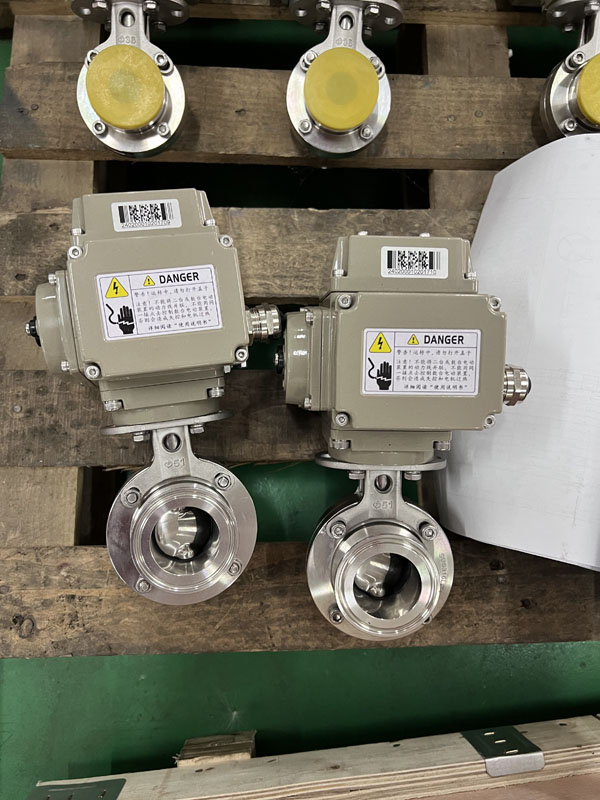
8. Choosing the Right Ball Valve for Leak Prevention
Key factors to consider (pressure, temperature, actuator compatibility).
Selecting the right ball valve demands careful consideration of key factors such as pressure, temperature, and actuator compatibility. The valve must be designed to withstand the system’s pressure rating without compromising safety or performance. Temperature resistance is equally critical, as extreme conditions can affect valve materials and operation. Actuator compatibility is another essential aspect, ensuring seamless integration with automated systems like electric actuators for accurate and reliable control. Matching these parameters to the specific application guarantees optimal functionality and extended durability in demanding environments.
Why electric ball valves are a preferred option in precision-sensitive environments.
Electric ball valves are the go-to choice in precision-sensitive environments due to their superior flow control, automation, and reliability. These valves offer unparalleled accuracy, allowing for fine-tuned adjustments that meet exacting operational requirements. Seamless automation eliminates the variability of manual intervention, delivering consistent performance under demanding conditions. Additionally, their robust design ensures long-term reliability, even in complex systems, making electric ball valves an indispensable solution for industries where precision is paramount.
9. Trends in Ball Valve Technology for Leak Prevention
Highlights on innovations like self-adjusting ball valve electric actuators.
Innovations like self-adjusting ball valve electric actuators are revolutionizing valve performance by delivering enhanced adaptability and efficiency. These actuators automatically adjust to fluctuations in system conditions, ensuring optimal performance and minimizing wear. This not only reduces the need for frequent maintenance but also extends the lifespan of the valve. With their ability to adapt to changing demands in real-time, self-adjusting actuators exemplify cutting-edge solutions that prioritize reliability and operational excellence in modern systems.
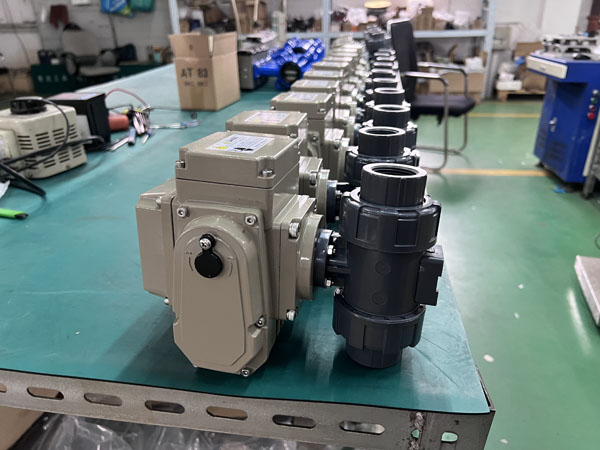
Sustainable options for leak-prone settings.
Sustainable options for leak-prone settings emphasize eco-friendly materials, advanced sealing technologies, and energy-efficient designs. By utilizing durable, non-toxic materials, these solutions mitigate the environmental impact while ensuring long-lasting performance. Innovations in sealing technology provide superior leak prevention, even under challenging conditions, reducing waste and operational inefficiencies. Additionally, energy-efficient designs lower power consumption, supporting sustainability goals without compromising reliability. These advances make sustainable valve solutions a responsible, high-performance choice for demanding leak-prone environments.
10. FAQS
Are electric ball valve actuators suitable for all applications?
Electric ball valves actuators are designed for versatile applications. While they are ideal for most industrial settings, specific factors such as temperature extremes or hazardous environments may require additional safety features or customized configurations to ensure safe, leak-free operation.
What factors affect delivery times for ball valves?
Delivery times can be influenced by product demand, customization needs, and logistical considerations. While off-the-shelf valves have shorter lead times, complex designs like electric actuated ball valves may require longer production periods to meet precise specifications. Early planning can help minimize delays.
What is the warranty period for electric ball valves and actuators?
The warranty period for electric ball valves and electric ball valves actuators typically ranges from 12 to 24 months, covering manufacturing defects and performance reliability. However, the exact terms may vary by manufacturer and can include extended warranties if specified during the procurement process.
What is the typical delivery time for ball valves and electric actuated ball valves?
The delivery time for standard ball valves generally ranges from a few days to a couple of weeks, depending on stock availability. For advanced solutions like electric ball valves and electric actuated ball valves, the delivery period may vary based on customization parameters or system requirements, typically taking 4-6 weeks for tailored applications.
What are the common applications for electric ball valves and electric actuated ball valves?
Electric ball valves and electric actuated ball valves are widely used in industries requiring precise flow control, such as oil and gas, water treatment, chemical processing, HVAC, and industrial automation. These valves excel in applications where reliability, automation, and leak prevention are critical, especially in high-pressure or precision-sensitive environments.

11. Conclusion
In understanding how a ball valve leaks, it’s clear that factors like poor sealing, material wear, and improper installation play significant roles. Leaks can lead to inefficiencies, downtime, and even safety risks, especially in demanding systems. However, advanced solutions such as electric actuated ball valves and electric ball valves actuators are pivotal in mitigating these issues. Their precise control, robust construction, and advanced sealing technologies ensure superior reliability and durability. Incorporating innovations like electric ball valves into your system not only prevents leaks but also enhances operational efficiency and sustainability. For industries requiring dependable flow control, investing in these cutting-edge components is not just an upgrade—it’s a necessity.

